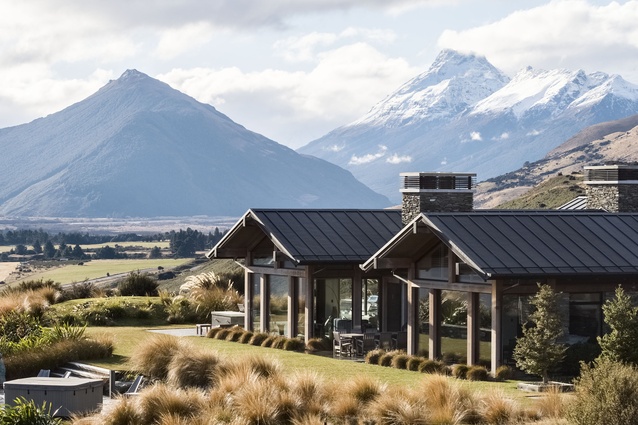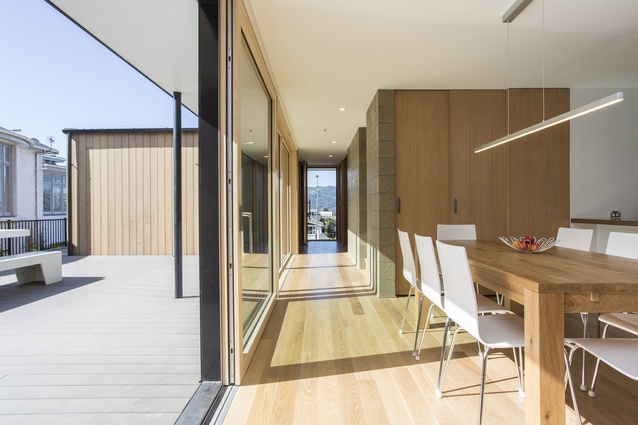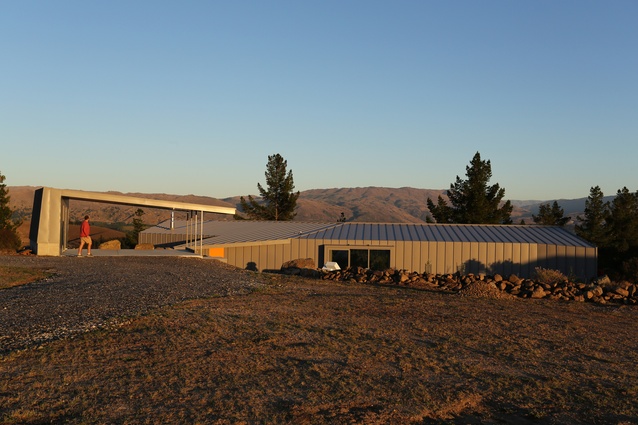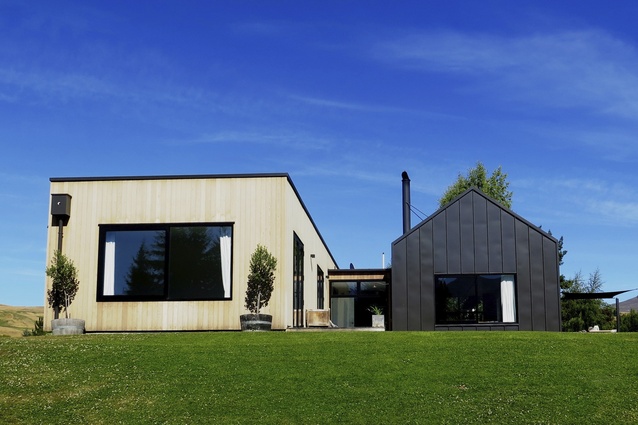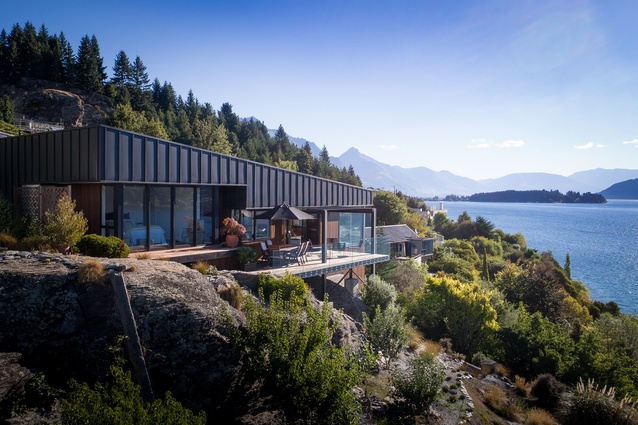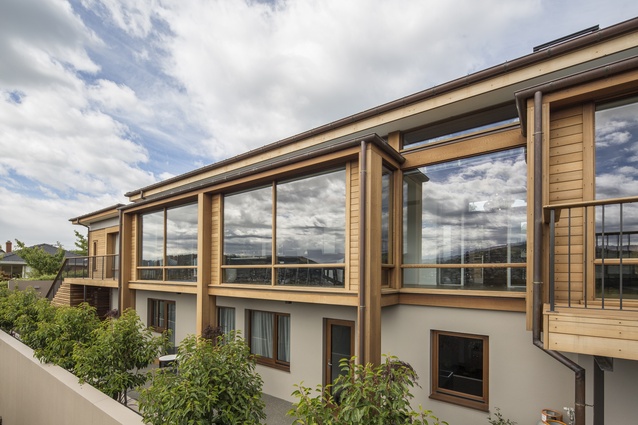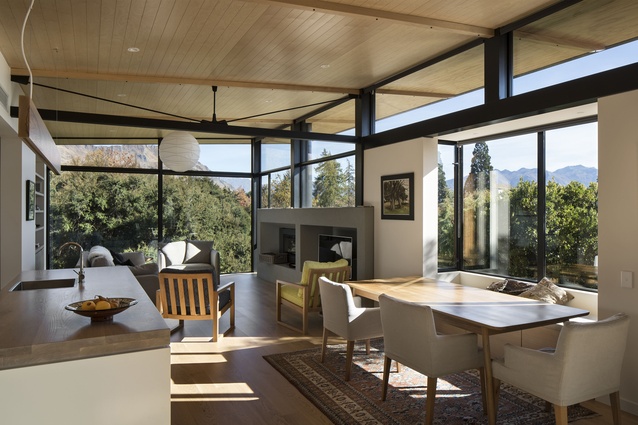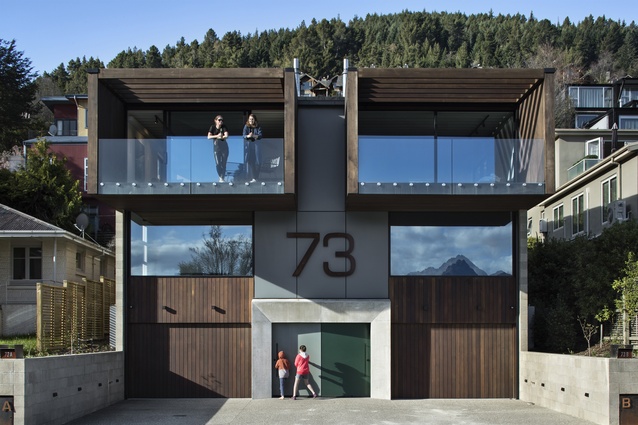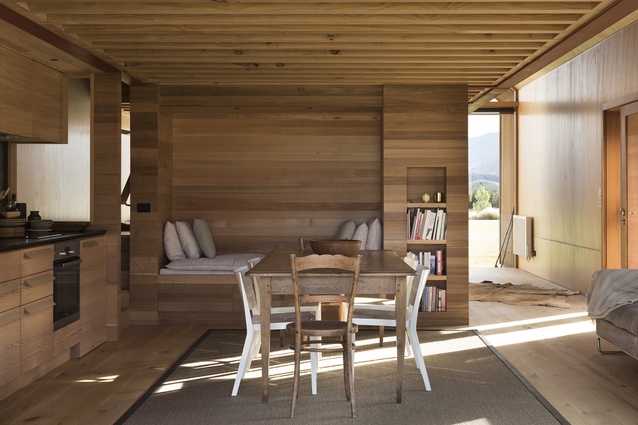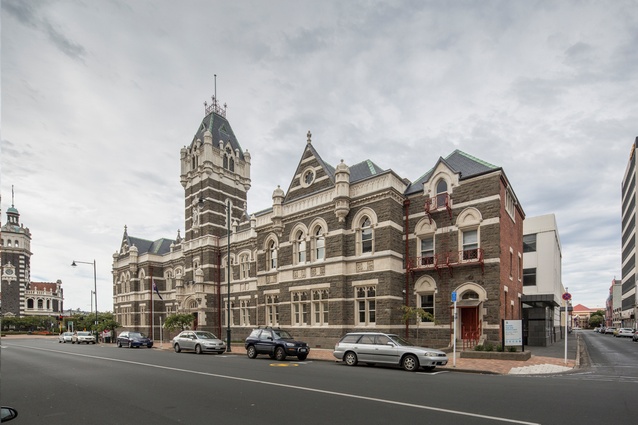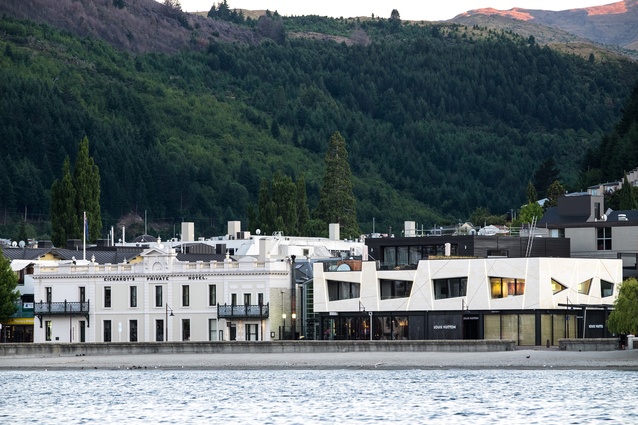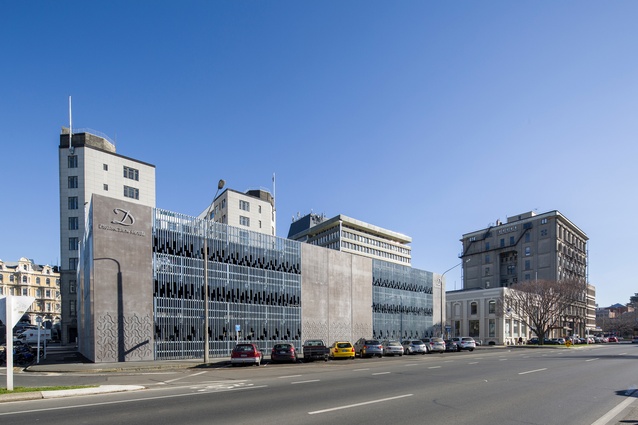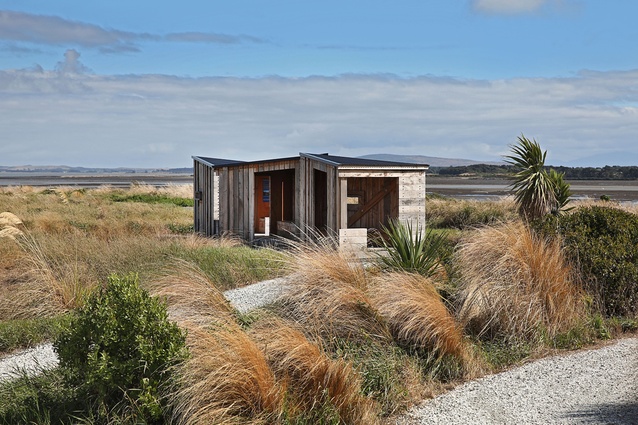2018 Southern Architecture Awards
The Southern Architecture Awards, presented by the New Zealand Institute of Architects, were announced at Toitū Otago Settlers Museum in Dunedin on 8 June. A heritage building in Dunedin and an estuary walkway in Invercargill were among the 13 winners.
The convenor of this year’s jury was Regan Hall, a Dunedin based architect. The jury was completed by Queenstown architect Rafe Maclean, Christchurch architect Vanessa Carswell and architecture and arts commentator and educator Tommy Honey.
Hall was particularly delighted by the projects which had a heritage aspect. He said, “These complex projects highlight the architect’s ability to positively influence and shape cities and towns. Heritage restoration work needs to be nuanced and sympathetic, while inserting a new building into a heritage context requires a complete understanding of scale and proportion.”
“It also calls for a certain amount of bravery if you do not simply wish to echo the style of a previous era,” he continued.
See a full list of winners with jury comments below:
Housing Awards
Twin Peak View House by Mason & Wales Architects
The jury said, “Thanks to the architect’s ability to manipulate scale and mass to disguise size, this large house responds to its surroundings in a confident yet recessive manner. Successfully sited, the house balances living spaces that open to breath-taking vistas of Lake Wakatipu with private, inward-focused spaces that have been pushed back into the site. Throughout, the material choices are entirely appropriate to the robust design.”
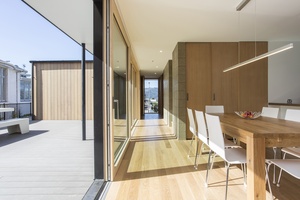
Stuart Street House by Architype
This house is a certified passive house that features superior insulation, smart heat recovery ventilation system and triple-glazed windows meaning it maintains a moderate temperature year round without added heating or cooling.
“This project is a leading example of low-energy building with a clear emphasis on interior comfort levels. Those traits, combined with careful spatial planning, a private west-facing courtyard, sensitive material selections and a bold street presence, have resulted in a very distinguished addition to Stuart Street,” the judges noted.
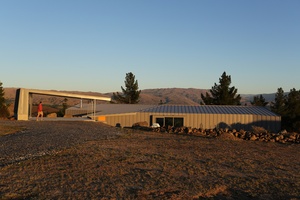
Beck Family Home by Bull O’Sullivan Architecture
The jury praised the approach to this house which they said, “reveals the first point of interest: a carport whose slanting roof leans toward a low form that rises out of the earth like stealth architecture – steel grey and slightly foreboding.”
They continued, “However, there is nothing menacing about this house – in fact, quite the opposite; it is lyrical in its lightness, with a simple boomerang plan that opens to the untouched landscape below. There is no waste in this house, only joy.”
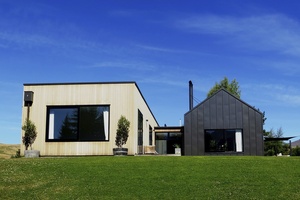
Fleck House by Jeremy Kingan Architect
The jury commended this house saying it “knows its ambition and fulfils it admirably.”
“Two forms, one gabled, one flat, slip past each other above two boxes, one wooden, one steel. These partners in simplicity are clear and direct with proportions to die for. The planning, however, is designed for life.”
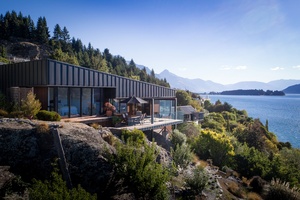
Kelvin Heights House by Condon Scott Architects
“Discreet and restrained to the street, this house opens up across an impressive precipice to excellent views of Lake Wakatipu. The attention to planning, orientation and siting has resulted in a variety of delightful internal and external spaces that provide numerous options for enjoyment, no matter the weather conditions,” the jury said.
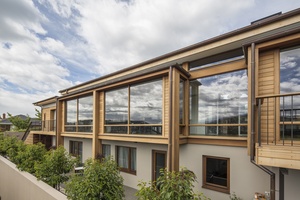
Brownville Crescent House by Parker Warburton Team Architects
The jury praised the “layered composition of classic materials – cedar, copper and masonry” used in this house noting that it may be a nod to Frank Lloyd Wright.
They said, “The architect’s attention to the client’s brief is evident in focused views and consideration of light, while the more extravagant details have resulted in spaces where you cannot help but pause and take note. As the materials patinate over time, this house will surely settle into its status as an unexpected urban gem on a quiet street.”
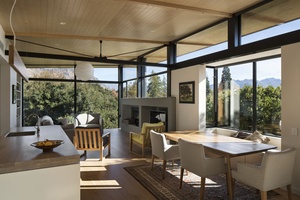
Kānuka House by Mason & Wales Architects
The jury commented on this project, “This new house has been gracefully inserted into an established neighbourhood surrounded by mature kānuka trees. From the private yet inviting entranceway, the house draws you in, through an interior gallery, to the heart of the home where views expand out through the treetops to the mountains beyond.”
“With its well-considered material palette, well defined spaces – including an exterior room that provides long views from a sheltered position – and control of natural light, this house is a pleasure to visit.”
Housing Multi Unit Award
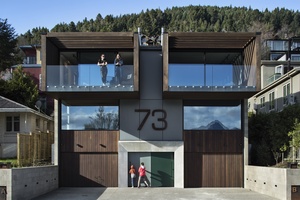
Binoculars by Assembly Architects
On this site, two houses share an entrance and a wall and feature mirrored plans. The jury noted, “Two homes, twice the fun?”
They continued, “The eye is not cheated here; the level of detailing elevates materials beyond their fundamental form, and everywhere you look there is something in which to take delight, including out front, where twin decks, seemingly unsupported, push bravely out towards the lake.”
Interior Architecture Award
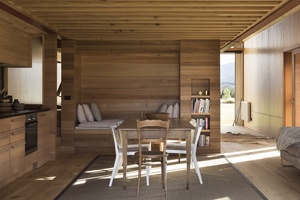
Station Cabin by Crosson Architects
The expanse of the site of this house is juxtaposed with the compact nature of the interior – which the jury compares to the spatial contrast of being in a sailboat cabin at sea. The judges said that, unlike a boat, “the cabin is delightfully grounded in the middle of a paddock on a hill”.
“Amber warmth glows from each well-crafted timber surface, with intertwined spaces economically using every nook and cranny. This design is tight and delicate – and it is a joy to visit, if you are ever invited…”
Heritage Award
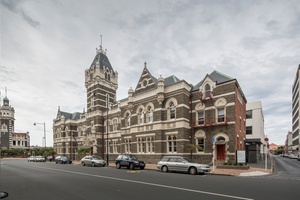
Dunedin Law Courts by Stephenson & Turner NZ, RDT Pacific and Aurecon in association
The jury said of this project, “Constructed in 1900, the category 1-listed Dunedin Law Courts is a charming and respected way-marker within Dunedin’s history. Thanks to a recent refurbishment, an equally long future has also been assured.”
“The mark of excellent heritage restoration is the apparent effortlessness that belies the complexity of work – and that is the case here. Substantial interventions have been achieved with sensitivity and to high conservation standards. The improvements benefit interior and exterior public realms: the streetscape is enhanced by reinstated lace-like wrought-iron decoration, cruciform finials and repaired stone tourelles, while the interior is enhanced by carefully reinstated carved timber panelling, and plasterwork and stair detailing.”
Commercial Architecture Awards
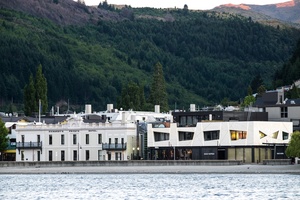
Eichardts II by Wyatt & Gray Architects
The jury described this building, which sits alongside a 19th century landmark building on Lake Wakatipu in Queenstown, as “no mean feat”. The judges noted, “The success of this building lies in the reinterpretation of the adjacent heritage building, an understanding of mass, and the ‘shattered’ angles of the façade – a modern take on the ‘punched apertures’ of the older building.”
“The architect has occupied the site to the limit of the boundaries and introduced a mass of white-stone – in honour of heritage – that appears to hover above the more recessive black-steel and glass shop frontages that present to the street below. This refreshing approach is a contemporary salute to a cornerstone of local heritage.”
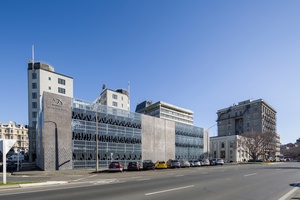
Crawford Street Carpark by Opus Architecture
“Never has a carparking building looked so good,” the jury said. “While holding its own with a strong clarity of purpose, this new amenity building has also been well integrated in scale, detail and material tones with the neighbouring historic precinct.”
Small Project Architecture Award
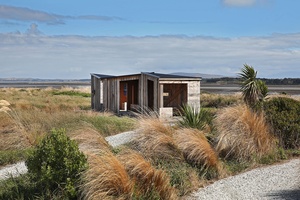
Invercargill Estuary Walkway Shelters by Beattie McDowell Architects
The jury said these shelters are “a triumph of prefabrication, minimalism and materiality.”
“The heft of sizable macrocarpa beams and boards – could a smaller building be made with larger timber? – belies the gentle repose of these shelters. These stations on a walkway acknowledge local geography, ensuring that you always have your back to the wind and your eyes on a view.”
All winners of the 2018 Southern Architecture Awards are eligible for shortlisting in the New Zealand Architecture Awards, which will be decided later in the year and announced in November.

